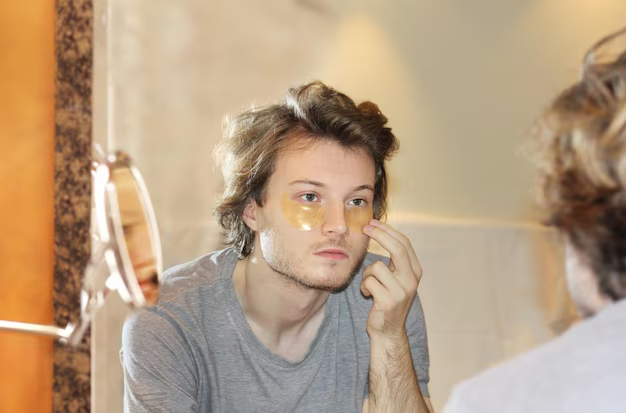Discovering the Benefits of Salicylic Acid for Acne: What You Need to Know
If you've ever faced the frustrating battle with acne, you've likely come across the term salicylic acid. But what is this ingredient that appears so often in acne treatments, and why is it claimed to be so effective? Let's dive deep into the world of salicylic acid and discover how it can become your ally in achieving clearer skin.
Understanding Acne: The Basics
Before we explore the workings of salicylic acid, it's crucial to understand what causes acne in the first place. Acne is primarily caused by clogged pores, excess oil production, bacteria, and inflammation. These elements combine to form various acne types, including blackheads, whiteheads, pimples, and cysts. Thus, any effective acne treatment must target these key factors.
Why Salicylic Acid?
Salicylic acid is a beta hydroxy acid (BHA), recognized for its ability to penetrate oily skin and exfoliate at a deeper level. Unlike alpha hydroxy acids (AHAs), which are water-soluble and primarily work on the skin's surface, BHAs like salicylic acid can get deeper into the pores, making it particularly effective for treating acne.
How Salicylic Acid Works
Deep Penetration and Exfoliation
One of the standout features of salicylic acid is its penetrating power. It dissolves the debris that clogs pores, which can help in reducing breakouts. By exfoliating the inner walls of your pores, it effectively clears blackheads and prevents future blockages.
Anti-inflammatory Benefits
Acne is often accompanied by redness and swelling. Salicylic acid provides anti-inflammatory benefits, soothing irritated skin and reducing the visible signs of acne.
Oil Control
Salicylic acid can also help control and reduce the production of sebum—the oil produced by your skin. Regulating oil can make your skin a less favorable environment for acne to thrive.
Incorporating Salicylic Acid into Your Skincare Routine
Choosing the Right Product
Salicylic acid is available in various formulations such as cleansers, toners, serums, and spot treatments. Deciding on the right product depends on your specific acne concerns and skin type.
Tips:
- Cleansers: Offer a quick application but may not stay on the skin long enough for significant effects.
- Leave-on Treatments (serums and gels): Provide extended contact with the skin, potentially yielding better results.
- Spot Treatments: Ideal for targeting specific blemishes but not for large areas.
Application Frequency
Most dermatologists recommend starting with a lower concentration and gradually increasing as your skin adapts. Too much salicylic acid can cause dryness or irritation.
Guidance: Start using it every other day or a few times per week and adjust based on your skin’s response.
Salicylic Acid Vs. Other Acne Treatments
Benzoyl Peroxide
Benzoyl peroxide is another popular acne treatment, and while it fights acne-causing bacteria effectively, it can be more drying than salicylic acid. Combining these two can target different aspects of acne but should be approached with caution if you have sensitive skin.
Retinoids
Retinoids promote cell turnover and can be very effective against acne, but they often require a prescription and can cause initial skin irritation. Salicylic acid may be a gentler choice for those new to acne treatments.
Natural Alternatives
For those looking for more natural solutions, tea tree oil provides antimicrobial and anti-inflammatory properties, but it's not as effective for deep pore cleansing compared to salicylic acid.
Potential Side Effects and Precautions
Common Side Effects
While salicylic acid is generally safe, some may experience dryness, minor irritation, or peeling. These effects are more common when used in higher concentrations.
Who Should Avoid It?
- Sensitive Skin Types: Those with particularly sensitive skin may want to be cautious and start with lower concentrations.
- Pregnant or Nursing Women: Consultation with a healthcare provider is advisable, as there's limited research on the safety of salicylic acid during pregnancy.
Enhancing the Effectiveness of Salicylic Acid
Combine with Moisturizers
To combat potential dryness, use a gentle, non-comedogenic moisturizer alongside your salicylic acid treatment.
Pair with Sunscreen
Salicylic acid can make your skin more sensitive to sunlight. Always apply sunscreen to protect your skin from UV damage while treating acne.
Myths and Misconceptions
“More Is Always Better”
False. Overusing salicylic acid can lead to irritation and worsen acne in the long run.
“Salicylic Acid Works Overnight”
While significant improvements can be seen, it typically takes a few weeks to notice substantial benefits. Consistency is key.
Conclusion: Embrace Salicylic Acid Mindfully
In the battle against acne, salicylic acid stands out as a versatile, effective treatment. Its ability to exfoliate inside pores, control oil, and reduce inflammation offers a comprehensive approach to managing acne. However, like any skincare ingredient, it requires careful moderation and mindful use. Evaluate your skin's needs, choose the right formulation, and integrate it thoughtfully into your skincare routine for best results.
Quick Overview: Salicylic Acid Essentials
- 🔍 Choose Wisely: Start with low concentration; consider leave-on treatments for better results.
- 🚫 Don’t Overdo: Gradually increase use to avoid irritation.
- 🛡️ Protect Your Skin: Use moisturizer and sunscreen to enhance benefits and prevent side effects.
- ⏰ Be Patient: Consistent use is necessary for noticeable improvements.
- 🤔 Consult If Needed: Seek professional advice for specific concerns or conditions.
By understanding and using salicylic acid effectively, you're taking a significant step towards achieving clearer, healthier skin. Stick with it, and enjoy the journey to a complexion you’ll love.
